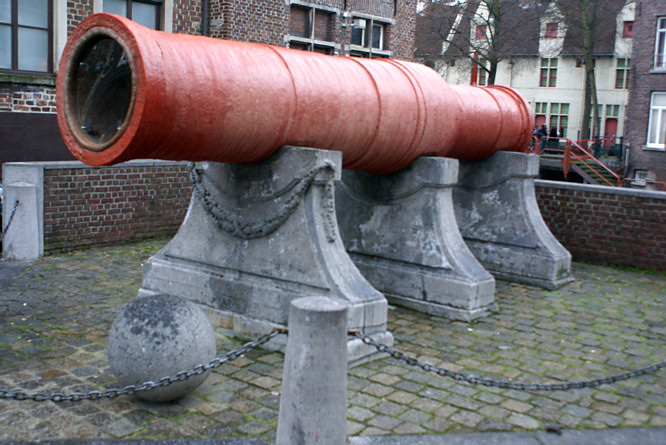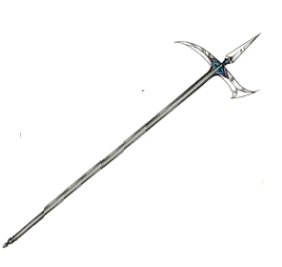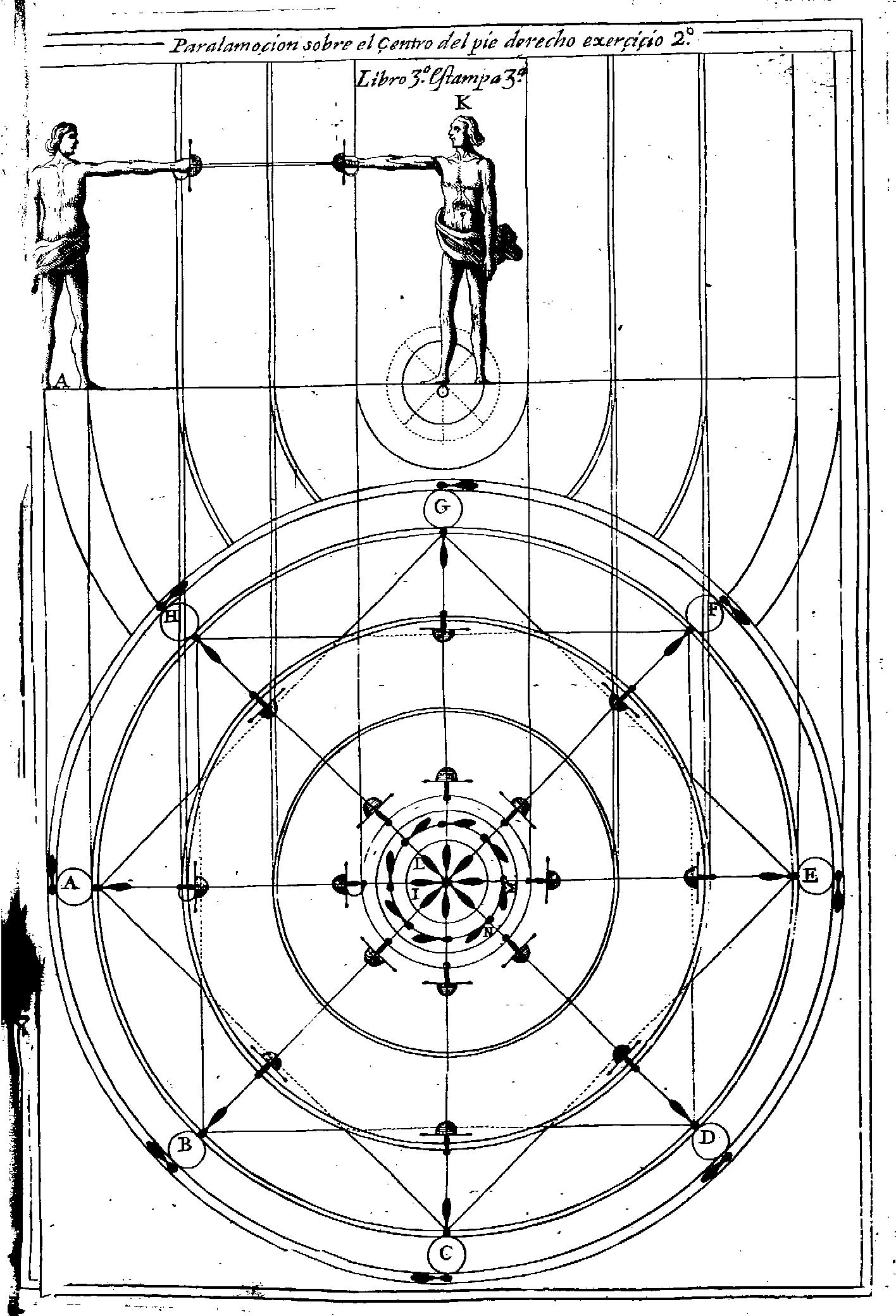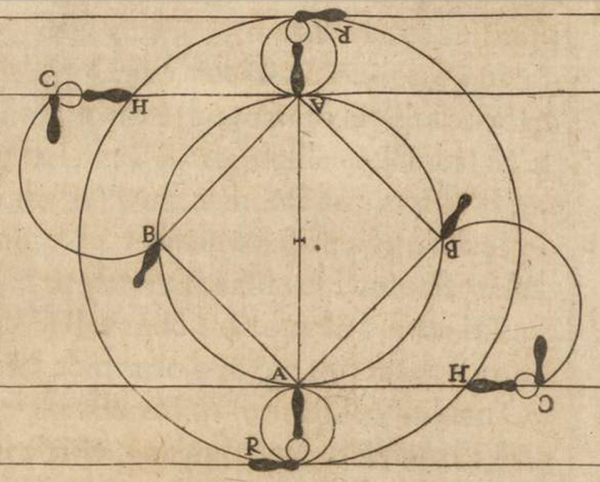Results 1,261 to 1,290 of 1485
-
2017-12-30, 04:57 AM (ISO 8601)Firbolg in the Playground


- Join Date
- Nov 2009
- Gender

 Re: Got a Real-World Weapon, Armor or Tactics Question? Mk. XXIV
Re: Got a Real-World Weapon, Armor or Tactics Question? Mk. XXIV
So, as you might have heard, the port of Heracleion in Egypt has been under excavation for some 20 years. It was the largest port in the Mediterranean Sea, Egypt's main hub, and a huge city, until it sunk into the sea for reasons currently unknown. One interesting fact is that the clay on the bottom of the sea covered and protected many shipwrecks, so that there now are 60 (!) ancient ships down there, waiting to be excavated.
While the whole thing will probably take centuries, some reports have already been published. It's mainly merchant ships, one of them loaded with limestone, with a tonnage presumed between 40 and 60 tonnes, and a length between 16 and 24 m, with some exceeding 30 m. The age range is from 1200 BC to medieval.
This pdf contains detailed information about the kinds of wood and contruction techniques found on the ships: https://halshs.archives-ouvertes.fr/...45538/document Originally Posted by J.R.R. Tolkien, 1955
Originally Posted by J.R.R. Tolkien, 1955
-
2017-12-30, 08:36 AM (ISO 8601)Dwarf in the Playground


- Join Date
- Jan 2012
-
2017-12-30, 08:46 AM (ISO 8601)Ogre in the Playground

- Join Date
- Feb 2007
- Location
- Bristol, UK
- Gender

 Re: Got a Real-World Weapon, Armor or Tactics Question? Mk. XXIV
Wushu Open Reloaded
Re: Got a Real-World Weapon, Armor or Tactics Question? Mk. XXIV
Wushu Open Reloaded
Actual Play: The Shadow of the Sun (Acrozatarim's WFRP campaign) as Pawel Hals and Mass: the Effecting - Transcendence as Russell Ortiz.
Now running: Tyche's Favourites, a historical ACKS campaign set around Massalia 300BC.
In Sanity We Trust Productions - our podcasting site where you can hear our dulcet tones, updated almost every week.
-
2017-12-30, 01:32 PM (ISO 8601)Dwarf in the Playground


- Join Date
- Sep 2017
 Re: Got a Real-World Weapon, Armor or Tactics Question? Mk. XXIV
Re: Got a Real-World Weapon, Armor or Tactics Question? Mk. XXIV
This is really interesting, although the pdf you linked to only discusses the ancient and classical shipwrecks, and discounts the medieval wrecks from the discussion. Personally, I would like to see info about the medieval ships.
I found the discussion regarding design work-arounds for making use of inferior local woods in ship building quite interesting. It seems these ships would look quite unusual in design compared to more recognisable and modern construction.
-
2017-12-30, 02:43 PM (ISO 8601)Ogre in the Playground

- Join Date
- Oct 2009
- Gender

-
2017-12-31, 01:39 PM (ISO 8601)Ettin in the Playground


- Join Date
- Dec 2009
- Location
- St. Louis
 Re: Got a Real-World Weapon, Armor or Tactics Question? Mk. XXIV
Re: Got a Real-World Weapon, Armor or Tactics Question? Mk. XXIV
Looks rather short to be a halberd, and I was under the impression that halberd spikes were much longer than that.
EDIT: Well, oops. Sorry, this was referring to an older post that I hadn't realized had become depreciated. Carry on.
-
2017-12-31, 01:46 PM (ISO 8601)Titan in the Playground


- Join Date
- Apr 2009
- Location
- Germany
 Re: Got a Real-World Weapon, Armor or Tactics Question? Mk. XXIV
Re: Got a Real-World Weapon, Armor or Tactics Question? Mk. XXIV
Polearms are not an exact science. People have been putting all kind of random sharp metal pieces on poles of different lengths for thousands of years.
Last edited by Yora; 2017-12-31 at 01:46 PM.
We are not standing on the shoulders of giants, but on very tall tower of other dwarves.
Spriggan's Den Heroic Fantasy Roleplaying
-
2017-12-31, 01:49 PM (ISO 8601)Dwarf in the Playground


- Join Date
- Sep 2017
 Re: Got a Real-World Weapon, Armor or Tactics Question? Mk. XXIV
Re: Got a Real-World Weapon, Armor or Tactics Question? Mk. XXIV
I agree. I'm not too sure of the distinction, but I would say it was simply a poleaxe based on the length in the image being about the same as the height of the wielder (~6ft). In my understanding, a halberd is essentially a longer poleaxe, with a length more in the 7-9ft range.
I was under the impression poleaxes were that length because they are intended entirely for armoured fighting, and are a good length for grappling techniques.
-
2018-01-04, 06:20 AM (ISO 8601)Barbarian in the Playground


- Join Date
- Dec 2011
- Location
- California
- Gender

 Re: Got a Real-World Weapon, Armor or Tactics Question? Mk. XXIV
Re: Got a Real-World Weapon, Armor or Tactics Question? Mk. XXIV
How did people fight ancient and medieval battles in the mud of France? I'm not from a climate with deep or thick mud, so I've never really thought about this in depth, but I'm in Champagne right now, and this mud is horrid. It grabs my boots and pulls them down, such that I must walk slowly and ponderously so as not to trip, and I certainly couldn't pull off any combat footwork. Yet people fought at Agincourt. How? How do you properly use a sword or made or spear with your feet and legs so hampered?
That said, I am an idiot, so I could be mistaken.
Avatars made for me:
-
2018-01-04, 07:49 AM (ISO 8601)Ogre in the Playground


- Join Date
- Oct 2011
- Location
- The US of A
 Re: Got a Real-World Weapon, Armor or Tactics Question? Mk. XXIV
Re: Got a Real-World Weapon, Armor or Tactics Question? Mk. XXIV
Most campaigns tried not to fight when the weather was bad AFAIK. If it was raining or snowing you might march a bit to make it to shelter, but otherwise you hunkered down and waited. I sympathize with you about the mud, though. Parts of Colorado have this reddish clay that when it's dry (most of the time) it bakes into something practically akin to concrete, but the one time I made the mistake of going for a hike right after it had rained, literally pounds of it clung to my shoes. I could either stop every 100 yards to clean it off, or deal with it dragging at my legs like lead weights.
-
2018-01-04, 08:25 AM (ISO 8601)Ogre in the Playground


- Join Date
- Aug 2013
 Re: Got a Real-World Weapon, Armor or Tactics Question? Mk. XXIV
Re: Got a Real-World Weapon, Armor or Tactics Question? Mk. XXIV
In reality you really don't. And Agincourt kind of show the reason why you should avoid it if possible. It didn't end well for those who tried.
Obviously even in a generally muddy area you can find places which aren't as affected (it's quite possible the English had less mud problems, they certainly didn't try crossing a field with heavy cavalry and thousands of men churning it up like the French did), and I would add, medieaval times were generally a bit more drained than today, when alot of wetlands that usually soak up extra water are gone and we have much more stone, pavement, asphalt and concrete blocking of large areas of ground that previously might have shared the burden of absorbing moisture.
-
2018-01-04, 03:07 PM (ISO 8601)Titan in the Playground


- Join Date
- Apr 2009
- Location
- Germany
 Re: Got a Real-World Weapon, Armor or Tactics Question? Mk. XXIV
Re: Got a Real-World Weapon, Armor or Tactics Question? Mk. XXIV
I have heard that the terrain at Agincourt is quite deceptive. There are very gentle but quite significant slopes that make the terrain look much more flat than it is, and the soil forms a particularly nasty kind of sticky mudd when drenched.
The English chose their battlefield wisely, but it surprise me that the French commanders were not aware of it, or felt so confident in their numbers that they thought it wouldn't matter. If this is a widespread issue in northern France, then the French should have had much experience with it.We are not standing on the shoulders of giants, but on very tall tower of other dwarves.
Spriggan's Den Heroic Fantasy Roleplaying
-
2018-01-04, 07:13 PM (ISO 8601)Ogre in the Playground


- Join Date
- Oct 2011
- Location
- The US of A
 Re: Got a Real-World Weapon, Armor or Tactics Question? Mk. XXIV
Re: Got a Real-World Weapon, Armor or Tactics Question? Mk. XXIV
Roxxy's question prompted me to go read more about Agincourt, and according to Wikipedia the area where they were fighting was a recently plowed field, which would have made it much worse than normal. Also, while the French did make some serious blunders, such as keeping their own archers to far back to effectively assist the men-at-arms (knights and heavy infantry), the English actually initiated the conflict by advancing from their initial position and then falling back somewhat. The French had appeared willing to wait for additional reinforcements (they outnumbered the English and were standing between the English army and safety) until the English baited them into attacking.
Agincourt being such a famous battle, there are a bunch of accounts both historical and contemporary, and none of them quite agree with each other about all the details, except that the English handedly won the day. So the ultimate answer would seem be: "How did armies fight when the weather was bad?" "Poorly."
Edit: I'm really just repeating the Wikipedia page here, but to summarize the major points-
- The English had planted wooden stakes to protect their archers from a cavalry charge, however when the French didn't attack, the English had to pull up the stakes, advance, and replant them; the French completely failed to take advantage of this vulnerability.
- When the English attacked and started the battle, the initial French response was a cavalry charge. However some men were absent (possibly related to the above), exercising their horses or getting food, meaning the initial French attack wasn't as strong as it should have been. Also, it was this initial cavalry charge that really stirred up the muck on the field.
- During the charge, the lightly-armored horses where much more vulnerable to the English archers than the fully-armored knights. A number of horses either where slain outright or panicked, which in turn worsened the terrain the following French infantry had to cross.
- The initial French heavy-infantry attack succeeded in pushing the English back, meaning that the distance the next wave had to cross increased. Also, there's some debate if the French were using shields; a good suit of plate armor was a strong defense against arrows, but without shields the french had to duck their heads to protect the eye-slits (weak point) of their helmets, which apparently makes it harder to breathe and more tiring to advance.
- After the English won the subsequent engagement, they took many prisoners. However King Henry mistook the French camp followers and pages as more French soldiers, and to discourage them from attacking, ordered the execution of many French prisoners (at this point the French supposedly STILL outnumbered the English, and the field was littered with weapons the French prisoners could have grabbed to rejoin the fight). This means the death-toll FROM BATTLE might not have been as high as indicated.
Last edited by Deepbluediver; 2018-01-04 at 07:58 PM.
-
2018-01-04, 08:34 PM (ISO 8601)Dwarf in the Playground


- Join Date
- Jul 2016
- Location
- Earth
 Re: Got a Real-World Weapon, Armor or Tactics Question? Mk. XXIV
Re: Got a Real-World Weapon, Armor or Tactics Question? Mk. XXIV
Again, they mostly didn't. Campaigns and battles were essentially only possible when the ground was dry and the levies were called up...so essentially summer and fall, with the latter being harder due to the need to gather harvests (certainly doable, though).
Agincourt in particular is a great example of everything that could go wrong in wet conditions. The French soldiers had to slog through dense mud, while the English could simply stand and give fire. However, it's important to note that Agincourt happened largely because of the climate conditions. The French saw the battle as their only chance before winter and impossible campaigning to eradicate the English army, which it likely was. After Agincourt--regardless of its outcome--the French would need to largely demobilize, while the English could regroup in relative safety at Calais.
However, weather problems weren't something unique to Medieval warfare. Muddy conditions may have been a major factor in the defeat of the Romans at Teutoburg Forest, as the lightly armored German warriors could run in circles around the (literally) bogged-down Roman train. And, closer to the modern day, the timing of mud and snow on the Eastern front of WWII were a major factor, as one simply couldn't maneuver armies between the start of winter and the drying of the fields in late spring and early summer. I believe that this was one of the factors that gave the Soviets time to prepare defenses against the Nazis at Kursk, for example, though Hitler's incompetence was probably the deciding factor.
-
2018-01-05, 05:02 AM (ISO 8601)Ogre in the Playground


- Join Date
- Aug 2013
 Re: Got a Real-World Weapon, Armor or Tactics Question? Mk. XXIV
Re: Got a Real-World Weapon, Armor or Tactics Question? Mk. XXIV
Not quite. The mud season in Russia is after the fall rains and after the spring thaw. So for example during winter when the ground has frozen it's excellent campaign season provided you can stand the cold (which the Germans and much of their equipment really couldn't). Of course it was also an exceptionally cold winter the first few years of the war.
The battle of Kursk happened in the deep summer and would not have been delayed by mud per se. The Nazis were among other things waiting for their new "wonder tanks" to arrive, which may have been a mistake as several verisons were kinda half-baked and not properly tested. A big reason the Soviets had time to prepare though was that it was really really obvious what was going to happen, and they had intelligence and prewarning about the German buildup too. At Kursk really I'd say we are already beyond the tipping point, the Nazis throw away a lot of resources.
More significantly an example might be the autumn of 1941 when the fall mud stopped the Germans dead while the Soviet army was essentially collapsing in front of them. Among other things it meant they didn't reach Moscow until the cold weather hit which they were illeqipped for. It's possible there might not have been any Siberian divisions to reinforce Moscow in 1941 either if the Germans had been a couple months earlier. Like e.g. occupiying it rather than fighting outside.
-
2018-01-05, 06:16 AM (ISO 8601)Firbolg in the Playground


- Join Date
- Nov 2009
- Gender

 Re: Got a Real-World Weapon, Armor or Tactics Question? Mk. XXIV
Re: Got a Real-World Weapon, Armor or Tactics Question? Mk. XXIV
About taking Moscow, can it be that the Germans would have instead found themselves fighting a third neverending Russian siege, like in Stalingrad and Leningrad?
About Agincourt, I have taken a look at the precipitations in the Nord-Pas-de-Calais area, and they tend to be constant along the year (around 60-70 mm rain each month). Of course, the question is whether the rain had time to evaporate during a colder month like October (which is the most rainy, after November). Originally Posted by J.R.R. Tolkien, 1955
Originally Posted by J.R.R. Tolkien, 1955
-
2018-01-05, 07:23 AM (ISO 8601)Ogre in the Playground


- Join Date
- Oct 2011
- Location
- The US of A
 Re: Got a Real-World Weapon, Armor or Tactics Question? Mk. XXIV
Re: Got a Real-World Weapon, Armor or Tactics Question? Mk. XXIV
According to wikipedia (again) "there had recently been heavy rain".
-
2018-01-05, 07:55 AM (ISO 8601)Dwarf in the Playground


- Join Date
- Aug 2016
 Re: Got a Real-World Weapon, Armor or Tactics Question? Mk. XXIV
Re: Got a Real-World Weapon, Armor or Tactics Question? Mk. XXIV
Historically military leaders went to great lengths to avoid situations where they would be forced to advance through or fight in muddy terrain. People fought at Agincourt because sometimes people make incredibly bad decisions.
Agincourt is instructive though as to why they didn't make a habit of fighting in the mud, the results speak for themselves. A force with numerical advantage, superior equipment, moral and in much better overall health anticipating reinforcements to swell their numbers got mauled by a numerically inferior force, the members of which were far from "in good health."
If you were forced to fight on a muddy battlefield, at least in a one-to-one melee, I'd suggest that your best course of action would be:
1. Relax. Stand still. If you must move, move deliberately.
2. Commit to simple, controlled actions.
3. Stay calm. Wait. Repeat, until your opponent makes a mistake.
4. Trust your armor. You will feel the hits. Pain doesn't kill you, panic does.
5. Repeat Step 3.
6. Once your opponent has committed an error, win the wrestling match.
-
2018-01-05, 08:10 AM (ISO 8601)Bugbear in the Playground


- Join Date
- Apr 2007
- Location
- kendal, england
- Gender

 Re: Got a Real-World Weapon, Armor or Tactics Question? Mk. XXIV
Re: Got a Real-World Weapon, Armor or Tactics Question? Mk. XXIV
on Kursk, it was a combination of several factors, including, but not limited to:
- A belief in the highest levels of the German command chain that the German army was practically unbeatable in a summer campaign, so they could effectively ignore what the Russians might do, because it just didn't matter.
- As a result of the above, there a lack of urgency, and thus repeated delays, from a start date of early may in the initial op orders to the eventual start on 5th July. the Germans felt they these delays would benefit them more than the Russians, but the Red Army did not waste the time given.
- the Germans rushed a whole raft of new equipment into service, and even delayed the battle to increase their numbers, but weren't able to either iron out the kinks in their new equipment (most of which had reliability issues in the battle), or build enough of these new weapons to overcome the larger numbers of "good enough" weapons the Russians could deploy.
- Despite the massive successes of 1941 and 1942, the Wehrmacht in 1943 was a much less capable force, as most of the veterans of 39 and 40 were dead or wounded, and the front line units were being backfilled with much less capable soldiers.
- Strategic laziness in the OKH, related to 1. they were convinced they could steamroll over anything the Red Army could put in there way, so they went the for obvious target, and didn't really care who knew. this, combined with confirmation form the both Russian and British intelligence networks that Kursk was a target, they were able to build the strongest defences in the known world to meet the Germans.
maybe, but the fall of Moscow in 1941 might well have broken the USSR beyond recovery. the fact they were able to stop the germans, even if by the skin of the teeth, gave Stalin and his regime the boost it needed to stay in power, and proved to the Russian people (and the Allied governments) that the Red Army could stop and even push back the Germans.About taking Moscow, can it be that the Germans would have instead found themselves fighting a third neverending Russian siege, like in Stalingrad and Leningrad?Last edited by Storm Bringer; 2018-01-05 at 08:43 AM.
Then it's Tommy this, an' Tommy that, an` Tommy, 'ow's yer soul? "
But it's " Thin red line of 'eroes " when the drums begin to roll
The drums begin to roll, my boys, the drums begin to roll,
O it's " Thin red line of 'eroes, " when the drums begin to roll.
"Tommy", Rudyard Kipling
-
2018-01-05, 10:07 AM (ISO 8601)Ogre in the Playground

- Join Date
- Oct 2009
- Gender

 Re: Got a Real-World Weapon, Armor or Tactics Question? Mk. XXIV
Re: Got a Real-World Weapon, Armor or Tactics Question? Mk. XXIV
Re: Agincourt
You need to understand, with respect to this baffling catastrophe, that this was a pattern for the French. Consider the following battles:
Hattin
Golden Spurs 1302
Crecy 1346
Poitiers 1356
Aljubarrota vs. Portuguese 1385 (where the Portuguese used essentially the same tactics the English used at Agincourt)
https://en.wikipedia.org/wiki/Battle_of_Aljubarrota
Nicopolis vs. Ottomans 1396
and then Agincourt in 1415
It was a pattern with the French, to impetuously attack against prepared defenses on bad terrain, despite advice, in contempt of strategy and so on. In all the examples I cited above, they paid a very heavy price for this arrogance.
They kept doing it for two reasons.
1) First and foremost, the concepts of Feudalism, of the superiority of the nobility and of the knightly heavy cavalry, and the valor of France was almost a religion for the French leadership. They believed in it and they relied on it, and they lead on it's basis - in other words, taking a cautious or prudent approach to battle could undermine the kings support among the gang of rival princes who made up the French leadership.
2) This impetuous, crazy strategy often worked for the French. They won far more often than they lost in fact. So it made it easier for them to just stick with what they felt worked.
3) The attitude they had toward lower orders of humanity, especially commoners of any kind, meant that the French typically had very weak infantry and missile armed troops, ultimately they were forced to rely on mercenaries who, while skilled, could not always overcome the intense contempt and hatred that the French nobles had for commoners. In several of the battles listed above, the French cavalry literally ran down their own men.
In other words, for the French, medieval warfare was stuck in a Feudal mode as almost a type of performance art. They couldn't shake out of this until the 16th Century when they figured out how to adjust their system, but they still tended to make these same kind of mistakes with catastrophic results (battle of Pavia in 1529 where King Francis was captured)
-
2018-01-05, 10:40 AM (ISO 8601)Titan in the Playground


- Join Date
- May 2016
- Location
- The Lakes
 Re: Got a Real-World Weapon, Armor or Tactics Question? Mk. XXIV
Re: Got a Real-World Weapon, Armor or Tactics Question? Mk. XXIV
It strikes me here that the French of that period are perhaps in some ways responsible for the stereotypical worst impressions we have of quote-unquote "medieval Feudalism".
It is one thing to suspend your disbelief. It is another thing entirely to hang it by the neck until dead.
Verisimilitude -- n, the appearance or semblance of truth, likelihood, or probability.
The concern is not realism in speculative fiction, but rather the sense that a setting or story could be real, fostered by internal consistency and coherence.
The Worldbuilding Forum -- where realities are born.
-
2018-01-05, 01:02 PM (ISO 8601)Ogre in the Playground


- Join Date
- Aug 2013
 Re: Got a Real-World Weapon, Armor or Tactics Question? Mk. XXIV
Re: Got a Real-World Weapon, Armor or Tactics Question? Mk. XXIV
They certainly are. The medieval romances where the civalric ideal was codified were mostly of French origin or French influenced, not in the least often being written in French. This period being largely dominated culturally by France and the various French courts.
Note I use "France" ancronistically here more as something we can place on the map. France being politically fragmented and there being several powerful courts e.g. in Aquitane, Burgundy, Bretagne and others during a large part of the period, variously the most powerful and culturally influential.
-
2018-01-05, 01:59 PM (ISO 8601)Barbarian in the Playground

- Join Date
- Feb 2012
 Re: Got a Real-World Weapon, Armor or Tactics Question? Mk. XXIV
Re: Got a Real-World Weapon, Armor or Tactics Question? Mk. XXIV
I think the French "arrogance" in a lot of these battles tends to be overstated sometimes. Often French leaders found themselves in a situation where an invading army was pillaging their homeland and felt that they needed to win a decisive victory as soon as possible.
Winning an offensive victory during the middle ages was often really hard to do in the best of times, but good heavy cavalry tended to work the best since they had a lot of armor and could quickly respond to where the enemy was weakest without growing too tired, whereas a formation of heavy infantry would typically be winded and disordered by the time it even reached the enemy. Even english longbowmen, though they could sometimes coax the enemy into attacking early like at Agincourt, weren't really suited for breaking through strong defensive positions.
Also, the lopsided casualties often tend to cover up just how close many of these battles were. During the middle ages casualty rates of up to 50:1 weren't really that uncommon as most of the killing tended to occur during the rout, when the losing troops were exhausted and weighted down by their heavy equipment. As you mentioned these crazy charges did actually work much of the time, and while it might seem redundant to say "if they had won they would have won" it's quite possible that had the french gained the upper hand crecy and Agincourt would have ended with the English being slaughtered and relatively few French casualties.
-
2018-01-05, 02:09 PM (ISO 8601)Ogre in the Playground

- Join Date
- Oct 2009
- Gender

 Re: Got a Real-World Weapon, Armor or Tactics Question? Mk. XXIV
Re: Got a Real-World Weapon, Armor or Tactics Question? Mk. XXIV
I would make a distinction here, depending on what period you mean.
During the late migration era into the Carolingian, French culture was very important.
In the High to Late Middle Ages though it was Italian culture which really dominated. French culture remained important to the English, who people tend to forget, were under a French speaking ruling class well through the High Middle Ages and into the Late.
But France crushed their own mini-Renaissance in the Langedoc region, whence came many of the Romances etc., by joining the Albigensian Crusade. They left their most important cultural centers down there in the South a smoking ruin and turned their main Southern University, the University of Toulouse, into the headquarters of the Inquisition. Even Paris University became reactionary and they tried several times to band Aristotle and Averroes etc. in the 13th Century.
By the 14th Century the dynastic wars which became the 100 Years War were beginning to turn much of Northern France, including the Champagne region once famous for their fairs, and Brittany which was kind of the second center of the poetry, Romances etc. into ruins, largely wrecked in the 100 Years War.
The importance of France in the medieval world is basically exaggerated by the importance of English historiography in the English-Speaking world, and by extension, much of 'The West' which is heavily influenced by Anglo-American media.
Everyone knows about Agincourt not so much because it was so important, but because of Shakespeare. Turks know all about Nicopolis and Portuguese know all about Aljubarrota but most Americans never heard of them. Relatively few ever heard of Golden Spurs even and that was a much more important battle in terms of consequences, than Agincourt.
After around the mid 13th Century the truth is France was a cultural and economic backwater, almost as much as England. The epicenter of culture was more in the center of Europe - Northern Italy, Flanders, Southern Germany, Catalona / Aragon, the Baltic coast, Bohemia and so on. roughly in that order.
Burgundy in particular, being an ally of the English for most of the Late Medieval period and more importantly, with all the cities in Flanders and Brabant a much, much more culturally and technologically sophisticated zone than France, even though they were ruled by different branches of the same (Valois) princely house. France borrowed a lot of technology and culture from Burgundy (particularly from the large Flemish cities like Bruges, Ghent, Ypres, Lille, Antwerp etc.) well into the 16th Century, almost as much as they did from Italy.Note I use "France" ancronistically here more as something we can place on the map. France being politically fragmented and there being several powerful courts e.g. in Aquitane, Burgundy, Bretagne and others during a large part of the period, variously the most powerful and culturally influential.
GLast edited by Galloglaich; 2018-01-05 at 02:24 PM.
-
2018-01-05, 02:22 PM (ISO 8601)Ogre in the Playground

- Join Date
- Oct 2009
- Gender

 Re: Got a Real-World Weapon, Armor or Tactics Question? Mk. XXIV
Re: Got a Real-World Weapon, Armor or Tactics Question? Mk. XXIV
Like I said, if you look at a list of the battles France fought in in the 12th-15th Centuries, they often won with wild cavalry charges.
but the consistent catastrophic disasters they suffered when they lost should have made them adjust more quickly. France had the best aristocratic heavy cavalry in Europe, or close to it, for most of the middle ages. But many other regions also had very good cavalry (Spain, the Teutonic Knights, and Poland notably) and almost every other economically significant part of Europe had learned to field combined-arms armies by the 13th Century and Italian, Spanish, Central and Northern European armies by the 15th Century were extremely sophisticated - featuring cannon, firearms, crossbowmen, pikemen, other heavy infantry, war-wagons and other war-machines, and light and heavy cavalry in just the right combinations. The French by comparison were still heavily leaning toward Feudal style heavy cavalry.
The one technology that France did adopt with great success was the cannon, that (and Jeanne D'Arc) was how they won the 100 Years War after all. But cannon fit with the French ethos - not every peasant could afford to build a massive 'Bombarde', only the King had the resources to hire the right experts and build a big enough blast furnace (at least in theory)
Spoiler: Massive 15th century Cannon made by Ghent
Of course this was undermined by the fact that comparatively small towns like Bruges and Ghent could build mightier and more sophisticated cannon than the King of France, but there were plenty of other smaller towns he could (and did) blow up with his cannon.
All those marvelous illustrated books, like the copies of Froissart etc., that we use as our windows into battles like Agincourt and Crecy and so on, were made in Free Cities in Flanders, not in France. France did not have the powerful artists guilds, paper-mills, and scriptoria to produce this kind of stuff on the same scale.

After 1450 when the movable type printing press arrived in Germany, note where they were producing books and where they weren't:

As you can see pretty clearly on that map of 'incunabla' - printed books and pamphlets created before 1500, the cultural epicenter was not in the 'West' i.e. England or France as our media would imply, but in the center.
G
-
2018-01-05, 03:02 PM (ISO 8601)Titan in the Playground


- Join Date
- Jan 2008
- Location
- Duitsland
- Gender

 Re: Got a Real-World Weapon, Armor or Tactics Question? Mk. XXIV
Re: Got a Real-World Weapon, Armor or Tactics Question? Mk. XXIV
An important point regarding Moscow that I think is easy to overlook - the logistical aspect. Moscow was the Soviet railway hub west of the Urals; the fact that Soviet troops were pushed back to Moscow rather than entirely destroyed was a major issue for the Wehrmacht, since it meant that the defenders were, logistically speaking, in a relatively good position while the German "logistical planning"* caused them to have a stop-and-go campaign due to problems with supplies catching up to advancing forces.
This also means that losing Moscow makes the entire campaign far more difficult to fight for the Soviets just because their supplies suddenly need to take long detours to get to the front.
*Which in some cases consisted of 'oh, we'll need to transport winter supplies along the rails, but they don't have the capacity to do so while also shipping all the ammunition we need? I guess that just means we'll have to win even faster to avoid that problem'.
-
2018-01-05, 03:06 PM (ISO 8601)Ogre in the Playground

- Join Date
- Oct 2009
- Gender

 Re: Got a Real-World Weapon, Armor or Tactics Question? Mk. XXIV
Re: Got a Real-World Weapon, Armor or Tactics Question? Mk. XXIV
I think it helps to keep in mind whenever you are looking at the Middle Ages (and specifically lest I get pounced on, the 'time of different armor', the post Carolingian, post-Viking Middle Ages aka mid 11th Century onwards)
whenever you are looking at that time, you really have to keep in mind that it's a world of competing realities. For the French high aristocracy - there were only 3 Estates: the Church who did the praying and thinking, the Nobles who did the fighting ostensibly against foreign enemies, and the peasants or serfs.... and in France 95% of the population were commoners, only 2% true nobility, and thus only 2% -5% of the population (5% if you were being generous and included courtiers and priests as human) really mattered. The rest were essentially two-legged livestock.
England also has the Three Estates but gives us the notion of some kind of medieval middle class, mainly in the form of their armed country gentry, the famous yeoman farmer with his longbow. The English suggest, and to large extent believe that this was a unique and superior aspect of their culture compared to the Continent.
But in most of the Central part of Europe you had many Estates: especially Burghers (subdivided into patricians and craftsmen and everyone else), university students, friars and monks and nuns as distinct from Priests. Fighting orders of brother-knights. Peasant republics like in Switzerland and Frisia and the Tyrol.
The French system competed against the others, and won enough to keep France mostly under French rule (with the exception of the extended English invasion during the 100 Years War)
All of these estates considered the others kind of irrelevant and annoying. The Holy See cared about Vatican politics, corralling the cardinals and archbishops, and perhaps the existence of rival Popes, but Kings and Cities were just fools blocking Gods Will. Kings and Emperors of various Monarchies cared about their own princely families, first and foremost, including rival brothers and uncles and wives and daughters, and saw all others as impediments. The Kings of Hungary, Spain and Portugal saw themselves on the Front Line against the Muslim Infidel, and saw all other monarchs and city-states as traitors who didn't care about the ultimate menace.
City States like Venice, Florence, Lubeck or Bruges saw basically all Kings, Popes and Emperors as fools, dangerous treacherous thieves to be manipulated when possible, appeased when necessary and forcibly blocked when required. The Religious, (monks, friars and nuns) cared about their Orders and those of their rivals, and the theological disputes between them. Universities were also universes unto themselves and thought anyone who couldn't read and write in Latin, (and ideally in Greek and Arabic too) was illiterate trash who just got in the way.
Even Leonardo Da Vinci was considered a semi-literate upstart by the educated Humanists of Italy because he couldn't read Aristotle in the original Greek or Virgil in the original Latin.
The various estates were always rubbing up against each other, some had a much more sophisticated view of the world which did indeed grasp the other perspectives (say, Venice for example) while others, in spite of being very powerful, were extremely provincial in their outlook. Like France.
But to some extent they all imposed their own reality on their neighbors, and all of their points of view were part of the crazy churn which left us the Renaissance - and thereby cannon, muskets, ocean-going ships, some impressive buildings, and some really nice paintings and statues.
G
-
2018-01-05, 03:19 PM (ISO 8601)Titan in the Playground


- Join Date
- May 2016
- Location
- The Lakes
 Re: Got a Real-World Weapon, Armor or Tactics Question? Mk. XXIV
It is one thing to suspend your disbelief. It is another thing entirely to hang it by the neck until dead.
Re: Got a Real-World Weapon, Armor or Tactics Question? Mk. XXIV
It is one thing to suspend your disbelief. It is another thing entirely to hang it by the neck until dead.
Verisimilitude -- n, the appearance or semblance of truth, likelihood, or probability.
The concern is not realism in speculative fiction, but rather the sense that a setting or story could be real, fostered by internal consistency and coherence.
The Worldbuilding Forum -- where realities are born.
-
2018-01-05, 03:40 PM (ISO 8601)Ogre in the Playground


- Join Date
- Nov 2012
- Gender

 Re: Got a Real-World Weapon, Armor or Tactics Question? Mk. XXIV
Re: Got a Real-World Weapon, Armor or Tactics Question? Mk. XXIV
-
2018-01-05, 03:46 PM (ISO 8601)Titan in the Playground


- Join Date
- May 2016
- Location
- The Lakes
 Re: Got a Real-World Weapon, Armor or Tactics Question? Mk. XXIV
Re: Got a Real-World Weapon, Armor or Tactics Question? Mk. XXIV
Here's a question...
Given that gunpowder (ie black powder?) was discover by accident, in the context of people looking for longevity elixirs IIRC, it wouldn't appear that it was inevitable that the entrance of gunpowder onto the scene when it historically occurred was inevitable.
So... just how late might have the discovery of gunpowder or something enough like it to make firearms, etc, practical, occurred, if the Chinese alchemists had not stumbled on it when they did?It is one thing to suspend your disbelief. It is another thing entirely to hang it by the neck until dead.
Verisimilitude -- n, the appearance or semblance of truth, likelihood, or probability.
The concern is not realism in speculative fiction, but rather the sense that a setting or story could be real, fostered by internal consistency and coherence.
The Worldbuilding Forum -- where realities are born.




 Reply With Quote
Reply With Quote















 RSS Feeds:
RSS Feeds: 

